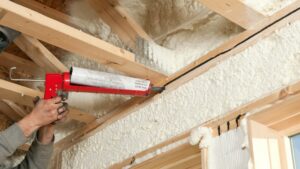Why Investing in Energy Efficiency Makes Financial Sense
The Journey of a First-Time Homeowner
Buying your first home is a major milestone, but it often comes with unexpected challenges. Take the story of Megan Moritz, for instance. She purchased her dream home in 2019 in the Arlington Heights suburb of Chicago, only to discover that her charming 1,400-square-foot house—built in the 1930s—came with high heating bills due to poor insulation.
Megan was determined to make her home more energy-efficient. In 2023, she invested around $5,700 in various projects, such as adding insulation to the walls and sealing ductwork leaks. The result? A staggering reduction in her gas heating bill! In December 2024, her costs plummeted from $311 to just $102. She describes her home as now "delightfully toasty."
A Sweet Tax Perk
Megan’s initiative not only warmed her home but also gave her a welcome financial boost. When she filed her tax return, she claimed a $1,200 federal tax break. This isn’t just an isolated case; each year, millions of homeowners take advantage of tax credits for energy efficiency improvements—making it a smart financial move.
However, this valuable tax break, officially known as the Energy Efficient Home Improvement Credit (or 25C credit), could soon be on the chopping block. As our country’s financial landscape undergoes major shifts, the future of these credits hangs in the balance.
What’s at Stake? Understanding the 25C Credit
The 25C credit allows homeowners to claim up to 30% of qualifying energy-efficiency project costs, with a maximum benefit of $3,200 annually. Here’s the breakdown:
- Up to $2,000 for installations like heat pumps or high-efficiency water heaters.
- Up to $1,200 for other improvements such as efficient doors, windows, and insulation.
This tax break isn’t just theoretical. According to IRS data, approximately 2.3 million taxpayers claimed the credit on their 2023 returns, with the average claimant saving around $880.
A Decision Influenced by Incentives
Take Blair Kennedy from Severna Park, Maryland, who also recognized the importance of energy efficiency. After spending over $6,000 to improve his home’s insulation and sealing its air leaks, he plans to leverage the tax credit to decrease his net expenditure to roughly $5,000. Blair admits, "It would have been a much harder decision to do it without tax credits."
The battle to maintain these credits is ongoing. Originally designed to bolster U.S. energy security after the crises of the 1970s, the focus has shifted toward combating climate change. As the Inflation Reduction Act aimed at reducing greenhouse gas emissions, it seemed like a financial lifeline for many homeowners looking to improve energy efficiency.
The Risk of Losing Out
While many benefits have arisen from the Inflation Reduction Act, a push among some lawmakers might jeopardize these critical tax breaks. With discussions about $4 trillion in tax cuts swirling in Congress, experts warn that funding for energy efficiency credits may face significant cuts. However, the pressure to keep these incentives alive is palpable, especially since they contribute to economic growth—many clean energy jobs and developments occur in Republican districts.
Energy Efficiency: More Than Just Tax Credits
Regardless of potential changes to the tax break, it’s crucial to understand that energy efficiency projects often yield considerable savings in utility bills—regardless of any tax incentives. The return on investment averages five to ten years, with tax credits effectively accelerating that timeframe to three to five years, making it a logical financial decision.
Individuals like Blair and Megan aren’t just motivated by tax breaks; they recognize that reduced utility bills will ease financial strain in the long run. For many, the choice to invest in energy efficiency is as much about personal comfort as it is about financial logic.
An Icing on the Cake
Megan summarizes her successful energy-efficiency journey perfectly: "The tax credit was the icing on the cake." With cost savings, improved energy efficiency, and heightened comfort in their homes, homeowners are not just investing in their properties—they’re investing in a sustainable future.
At Extreme Investor Network, we believe that proactive financial decisions today can pave the way for a more comfortable, efficient, and financially secure tomorrow. Whether you’re a new homeowner or a seasoned property owner, now is the time to explore how energy efficiency can benefit both your wallet and the planet.
Stay tuned with us for more insights into personal finance and innovative ways to build your wealth sustainably!

